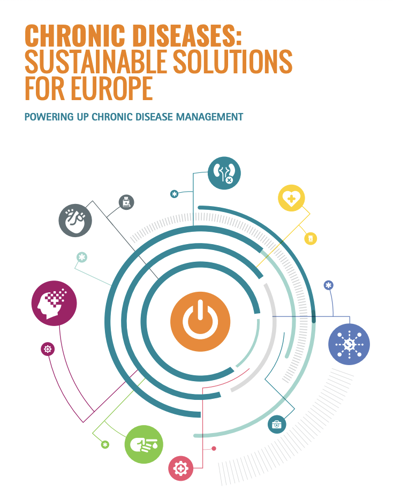Are European policy makers losing interest in health?
Remember a few years ago? European societies were buckling under the most severe pandemic since the “Spanish flu”. Hospitals beleaguered, healthcare workers exhausted, social and economic life under lockdown. COVID-19 brought up some of the best features of the European health sector - dedicated healthcare workers, ingenuity in deploying telemedicine solutions and an innovation system that in record time developed the vaccines that released us from the paralysing grasp of the virus. But it also ruthlessly revealed the consequences of many years of underfunding health systems. Overwhelmed by COVID-19, healthcare systems had to neglect many other patient groups, many who got delayed diagnosis or treatment with consequences we will have to face for a long time.
COVID-19 also made clear that one of the most important factors for health system and societal resilience is not stockpiles of medical equipment or hospital beds, but having a healthy population, as many of the most severely affected COVID-19 patients had other underlying conditions, and also empowered patients that are equipped to manage their conditions at home or in the community without the need of regular visits to the hospital.
The European Semester reports of 2020 were dominated by the response to the crisis, and all 27 Member States were recommended to take measures to strengthen their health systems, including through improving primary care, strengthen the healthcare workforce, investing in infrastructure and critical equipment, and the deployment of e-health.
But world events move fast and the memory is short. The cost-of-living crisis, partially fuelled by inflationary ripple effects from the COVID-19 crisis, Russia’s invasion of Ukraine, the climate crisis and increased geopolitical tensions all call for attention from our governments and institutions, and rightly so. But we would make a huge mistake if we once again became complacent when it comes to evolving and reforming our health systems to meet future challenges and needs. Are we?
The ECOFIN Council is today adopting the Country Specific Recommendations (CSR’s) for the 2023 European Semester cycle, and the contrast to previous years is quite stark. While all 27 countries got recommendations relating to renewable and energy infrastructure as well as on skills and adult learning, only six countries received recommendations relating to health and healthcare. For example, Latvia and Lithuania were asked to strengthen the adequacy of their healthcare (sounds like a low bar to me but ok) while Austria and Slovenia are recommended to ensure the fiscal sustainability of their healthcare and long-term care systems. The country reports contain a few more details but far from a coherent strategy or a clear investment case, and the general absence from the CSR’s indicate that the health imperative is slipping from the political agenda.
Health policy and financing presents a conundrum for policy makers. On one hand, health systems are in need of reforms and strategic investments, both to make them better prepared for future crisis and to better cater to the needs of people and patients today. On the other hand, many countries face fiscal sustainability issues due to the pressures the ageing population put on health and long-term care systems.
According to OECD projections, public spending on health will increase with almost 1 percentage point of GDP in total for the 27 EU countries by 2070. Long-term care spending is expected to grow even more dramatically, with a projected increase in public spending across the 27 EU countries of more than 1 percentage point, from 1.7% of GDP in 2019 to 2.8% of GDP in 2070. For some countries like the Slovak Republic, Finland, Belgium and Sweden it will be more than 2 percentage points of GDP, and as much as 2.7 and 3.4 percentage point increases in the Netherlands and Denmark respectively.
Where should these funds come from?
OECD lays out four possibilities.
- Grow the health budget through increased revenues. This might be possible in some cases, but there are also limits (not least political) to how much taxes can be increased.
- Reallocate government spending from other sectors to the health budget. This might prove challenging due to competing needs to invest in other priority areas such as the green energy transition and defense.
- Shift some healthcare expenditure to private insurance. This is not very palatable in the context of the European social model and could risk increasing health inequalities instead of reducing them.
The fourth option is to improve the efficiency of current resources allocated to health. This option is sometimes misconstrued as some sort of short-term cost-cutting exercise – closing wards, delisting medicines, downsizing staff. But what we really should be doing is to invest in strategies that improves patient and population health outcomes in the long term and thereby also reduces cost, by reducing the need for emergency care, lengthy hospital admission and burdensome interventions to treat late-stage disease and preventable complications.

